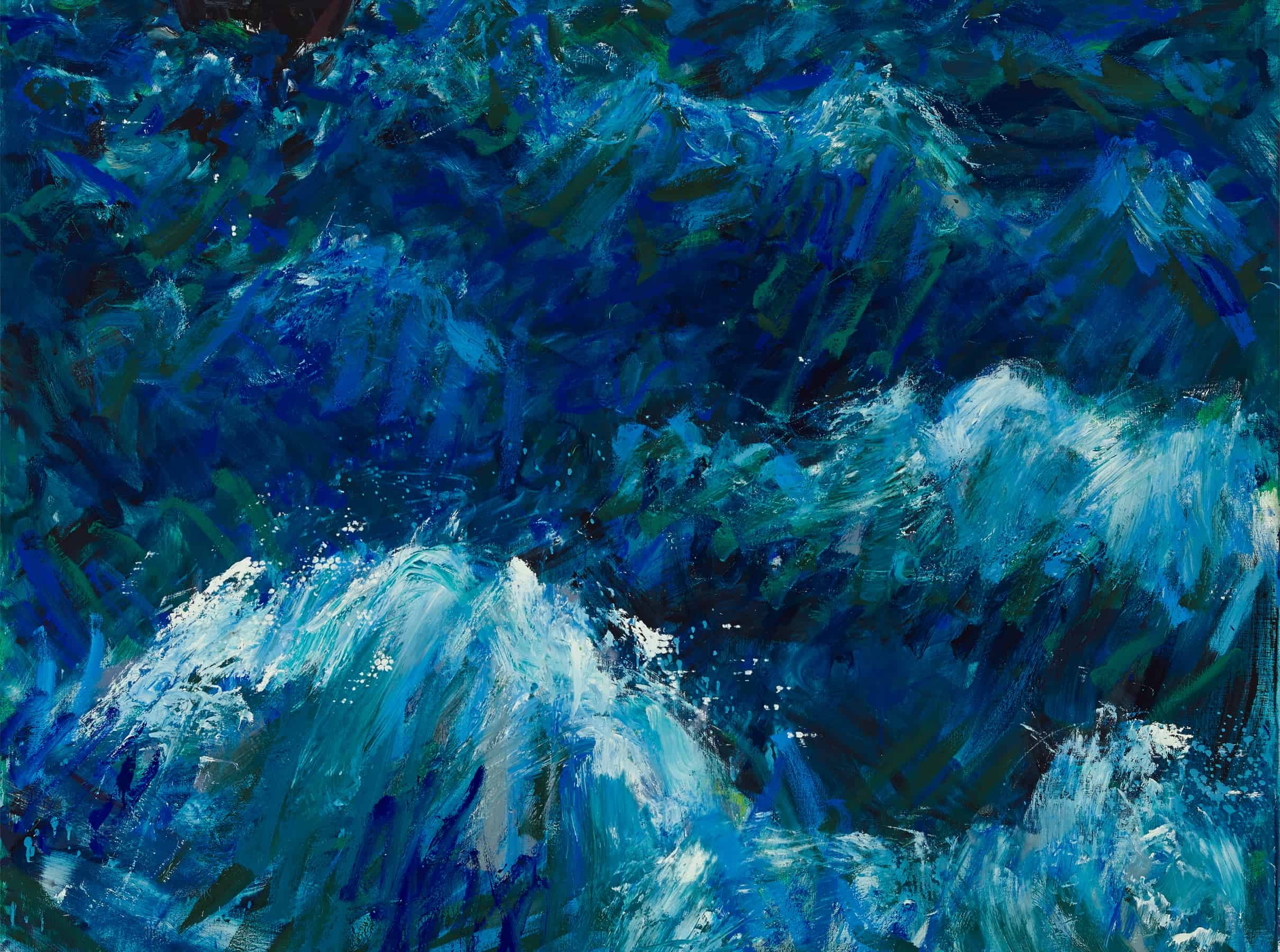Dos figuras femeninas [Two female figures]
Pedro Berruguete
The panel is a fragment of a more complex body. An altarpiece. Texts are also bodies to be dissected. Inside the body, two women’s bodies indulge in the noble art of conversation. The hands gesticulate. They also talk. A transitive property: the fragment speaks. The body of art is communicative.
Figura alegórica [Allegorical Figure]
Unknown Artist (Flemish, Scandinavian or French)
Jupiter, transmuted into an eagle. A matron’s body in rich clothing. The mirror reduces the gaze to a reflection and draws us into the picture. Someone cuts away the panel and, with it, an arm and a hand. What goes over the edge is amputated. There is no confusion between the lived and the painted, but perhaps there is an allegorical punishment for a flighty wench.
David con la cabeza de Goliat [David with Goliath’s Head]
Unknown Artist (Italian)
The lips and shoulder of David are sensual, and in these times of ‘queer’ hatred of the binary, we recognise ancient paradigms: the indefinite body of the ephebus, the androgynous beauty, and the plaited velvet of a head of hair that has nothing to do with bull’s heads hung on walls. Nothing is stuffed.
Degollación de san Juan Bautista [The Beheading of Saint John the Baptist]
Giovanni Baglione
John still has his little animal’s head. But the staring eye knows the story. Tremor. The executioner’s arm is powerful: you have to be strong to carry out a beheading. The body of one who kills by royal command. One body subjects the other: the hand holds down the head of the one about to die.
Judith con la cabeza de Holofernes [Judith With the Head of Holofernes]
Cristofano Allori
A story inside a story: Allori is Holofernes; his lover, Mazzafirra, Judith; his mother-in-law, the old woman. Apart from the hypothetical sentimental prophecy, have you noticed the beauty of the composition, the colours, the strength with which Judith clenches her fists to grip the sword and the hair of the man reduced to his head?
José y la mujer de Putifar [Joseph and Potiphar’s Wife]
Antoni Viladomat i Manalt
Chaste body and tempting body. He looks fed up – “Lord, what I have to put up with” – and she doesn’t want her catch to escape alive. He is chaste, she is a minx. This biblical scene amuses me enormously because I can’t help hearing a snatch of Spanish operetta through synaesthesia: “Ay, Ba, Ay, Ba, Ay, Babylonian who makes me giddy…!”
Isabel II [Isabella II]
Federico de Madrazo y Kuntz
The feminine body of power is twenty years old. The roundness of the white flesh reveals a fatty diet. It is a clothed body. A queen is not an allegory that can be shown nude. The body and its attire – bright blue dress, jewels, metals on the diadem – are of excellent quality. All is as it should be. Reassuring.
Huyendo de la crítica (Una cosa que no puede ser o Muchacho saliendo del cuadro) [Escaping Criticism (A Thing that Cannot Be or Boy Emerging from the Frame)]
Pere Borrell del Caso
“… there is a striking contrast between the tension of the collar bone, the thinness of a small and narrow chest, and the roundness of a pair of hands, and even of an ankle, that are still a child’s. Then I notice (…) the boy’s clothing, and I have to insist that he’s not from a good family.”
Figura femenina reclinada [Reclining Female Figure]
Josep de Togores
The anonymous woman shows the curve of the shoulder and luxuriant udders, notwithstanding the slant of the geometry. She wears her hair loose: women who can be painted and reduced to a polygon – neither ethereal nor industrial, but heavy metal all the same – must have attractive locks. In 1925, bald muses did not yet exist.
Los asfaltadores de la Puerta del Sol [The Asphalt Layers of the Puerta del Sol]
José Gutierrez Solana
The body of work is carnivalesque and nocturnal, intoxicated by the fumes from the asphalt. The body, circular in composition and Goyesque in build, is many made one by the effort. A collective body of shadows and lights that barely illuminate. A man protects his clothes with an apron. New trousers would mean excessive expenditure.
Cabeza [Head]
Antonio Saura
This part of the body, separated from the rest of the anatomy, could be a self-portrait. The head functions simultaneously as metonymy and amputation of a painter. Moreover, I see gesture, convulsion, the tragedy of Darth Vader and a metallicised insect from another galaxy. Psychological terror and self-inflicted harm. A quest and a recreation in pain.
Sandra
Antonio Saura
To save himself from destruction, Saura paints a feminine archetype. In this salvation, I – a lady looking at this other lady who is hidden and fractured – glimpse cultural residues of spiders and dark religions. I console myself with the thought the painter turns just as much black cruelty on himself in the decapitation of his own self-portrait.
Las Meninas V
Soledad Sevilla
Tucked away and imaginatively revealed beneath the weft and the warm effect of the light and the blanketing atmosphere are the figures of an ancient art: king and queen, reflections, painter, dogs, princess, ladies-in-waiting… Bodies and multitudes are inside my eyes. Or they are phantasmagoria. The lady hides beneath the fine silk and tissue.
Retrato de Luis Ángel Rojo [Portrait of Luis Ángel Rojo]
Carmen Laffón
The male body of power is not painted in festive garb or a domestic dressing-gown. It is painted with the decorous realism-reality of a well-cut suit. A grey three-piece suit almost blending into the background in a bureaucratic mimesis of the efficient man who does not have to show off. It is nearly obligatory to pose with a serious expression and wear glasses.
